food supplement packaging Service
Packaging is far more than just a container for your supplement product—it’s a critical business decision that impacts everything from product stability and shelf life to consumer perception and purchase behavior. The right packaging strategy can enhance your brand identity, improve customer experience, and provide a competitive advantage in the crowded supplement marketplace.
As a leading dietary supplements OEM manufacturer, we approach packaging as a strategic opportunity rather than just a functional necessity. This guide will help you understand not only what options are available, but more importantly, when and why to choose specific packaging solutions based on your unique product requirements, target market, and business objectives.
Supplement Packaging Types Comparison Analysis
| Packaging Type | Key Advantages | Key Disadvantages | Suitable Applications | Cost Level | Shelf Life |
|---|---|---|---|---|---|
| Capsule Bottles |
• Excellent sealing & moisture protection • Precise dosage control • Large branding space • High consumer acceptance • Reusable packaging |
• Higher packaging costs • Larger volume increases shipping costs • Plastic bottles less eco-friendly • Susceptible to moisture after opening |
• Premium supplement brands • Long-term storage products • Retail channel sales • Daily supplement products |
Medium | 18-36 months |
| Softgel Blister Packs |
• Individual seal maintains freshness • Portable and convenient • Excellent tamper-evidence • Professional appearance • Precise dosage control |
• Higher production costs • More packaging waste • Difficult to recycle • Challenging for elderly to open |
• High-value nutraceuticals • Pharmaceutical-grade supplements • Travel-size products • Gift packaging requirements |
High | 24-36 months |
| Powder Pouches |
• Low packaging costs • Easy transport and storage • Suitable for large doses • Customizable pouch sizes • Direct ingredient visibility |
• Relatively poor sealing • Prone to moisture and clumping • Less precise dosing • Lower-end brand image • Risk of spillage |
• Bulk protein powders • Meal replacement products • Cost-sensitive markets • Gym channel distribution |
Low | 12-24 months |
| Stick Packs |
• Excellent portability • Precise single-serve portions • Modern, trendy appearance • Appeals to younger consumers • Quick and easy consumption |
• Higher per-unit costs • More packaging material usage • Complex production process • Shorter shelf life potential |
• Ready-to-drink supplements • Sports nutrition products • Convenience store channels • Young consumer markets |
High | 12-18 months |
| Glass Bottles |
• Superior chemical stability • Premium brand positioning • 100% recyclable & eco-friendly • Excellent light protection • No flavor/odor migration |
• Heavy weight increases shipping costs • Breakage safety concerns • Highest packaging costs • Not suitable for large volumes |
• Premium essential oil products • Liquid vitamins • Luxury supplement brands • Light-sensitive formulations |
High | 24-48 months |
| Foil Pouches |
• Excellent barrier properties • Moderate cost • Lightweight for shipping • Heat-sealable closure • Superior light & moisture protection |
• Basic appearance quality • Non-resealable once opened • Requires transfer after opening • Complex aluminum recycling |
• Export trade packaging • Industrial-grade raw materials • Bulk purchasing customers • High preservation requirement products |
Medium | 18-36 months |
| Tubes |
• Convenient squeeze dispensing • Good sealing performance • Easy portion control • Modern, stylish appearance • Ideal for paste products |
• Limited product type compatibility • High cleanliness requirements • Complex filling process • Not suitable for powder products |
• Gel-based nutritionals • Paste-form supplements • Topical nutritional products • Children's nutritional supplements |
Medium | 18-24 months |
Selection Recommendations:
Premium Market: Choose capsule bottles or glass bottles to enhance brand image
Cost Control: Powder pouches and foil pouches offer the best cost-effectiveness
Portability Needs: Stick packs and softgel blister packs are most suitable
Preservation Requirements: Glass bottles and foil pouches provide optimal storage conditions
Environmental Considerations: Glass bottles are fully recyclable and the most eco-friendly option
Global Markets: Consider local regulations, consumer preferences, and distribution channels when selecting packaging
Additional Considerations for Global Markets:
- Regulatory Compliance: Different countries have varying requirements for supplement packaging materials and labeling
- Cultural Preferences: Some markets prefer traditional packaging while others favor innovative formats
- Climate Conditions: Tropical markets may require enhanced moisture protection
- Distribution Channels: E-commerce vs. retail stores may influence optimal packaging choice
Packaging Options We Offer
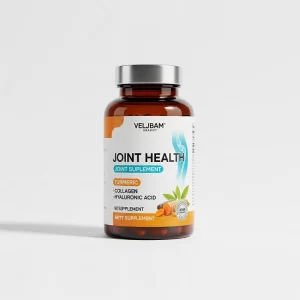
Plastic Bottles
Durable HDPE and PET bottles available in various sizes, colors, and styles. Ideal for tablets, capsules, and many powder formulations. Options include wide-mouth configurations, custom colors, and specialized shapes to enhance brand recognition.

Blister Packaging
Individual dose protection that enhances product stability while providing tamper-evident benefits. Available in standard and custom configurations for tablets and capsules.
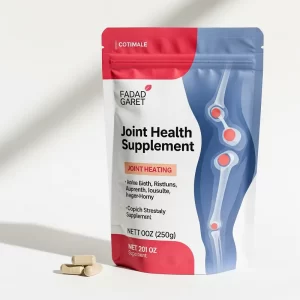
Zipper pouches
Zipper pouches offer exceptional versatility and cost-effectiveness for supplement packaging, featuring resealable convenience that maintains product freshness after multiple openings, lightweight construction that reduces shipping costs, excellent barrier properties that protect against moisture and contaminants, and space-efficient storage that maximizes shelf utilization. Their user-friendly design appeals to consumers who value portion control and extended product life, while the customizable printing surface provides ample branding opportunities, making them an ideal packaging solution for powder supplements, granular products, and bulk nutritional items where repeated access and preservation are essential.

Plastic jars
Plastic jars provide superior product protection with excellent moisture and air barrier properties, durable construction that withstands handling and shipping stresses, wide-mouth opening that facilitates easy product access and accurate dosing, transparent or translucent design that allows consumers to view product contents and quantity, lightweight yet robust structure that reduces transportation costs while maintaining product integrity, and extensive customization options for labeling, colors, and sizes that enhance brand visibility and shelf appeal. Their tamper-evident closure systems ensure product safety and consumer confidence, while the reusable nature adds value for environmentally conscious consumers, making plastic jars the preferred choice for capsules, tablets, powders, and gummies where long-term storage stability and professional presentation are paramount.
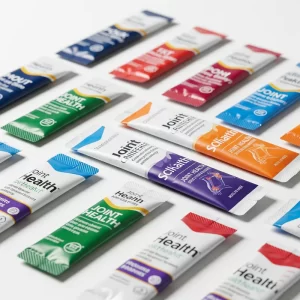
Sachets and Stick Packs
Sachets and stick packs represent the pinnacle of convenience and precision in supplement packaging, delivering exact single-serving portions that eliminate dosing guesswork while maximizing portability for on-the-go consumers, featuring superior barrier protection through multi-layer laminated films that preserve product stability and extend shelf life, and offering unparalleled marketing appeal through their modern, professional appearance that attracts younger demographics and premium market segments. Their compact, lightweight design significantly reduces storage space and shipping costs, while the tear-open functionality provides instant access without requiring additional tools or containers, making them ideal for powdered supplements, instant drinks, probiotics, and nutritional boosters where convenience, accuracy, and freshness are critical success factors. The individual packaging format also enhances product hygiene by preventing cross-contamination and moisture exposure that can occur with multi-serve containers, positioning sachets and stick packs as the preferred choice for innovative brands targeting active lifestyles and premium positioning.
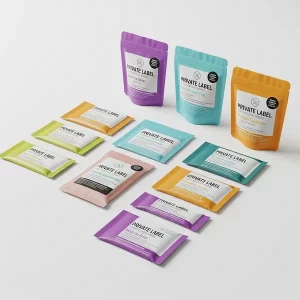
Unit Dose Pouches, Sachets, Packets
Unit dose pouches, sachets, and packets represent the ultimate in pharmaceutical-grade precision and convenience, delivering exact predetermined dosages that eliminate measurement errors while ensuring optimal product efficacy and consumer safety, featuring advanced barrier technologies with multi-layer films that provide superior protection against moisture, oxygen, and light degradation to maintain product potency throughout the entire shelf life. Their individual sealed format prevents cross-contamination and preserves sterility, making them ideal for sensitive ingredients like probiotics, enzymes, and vitamins, while the compact, portable design appeals to modern consumers seeking grab-and-go convenience for travel, work, or active lifestyles. The tamper-evident single-use packaging enhances product integrity and consumer confidence, reduces waste through portion control, and enables innovative product formulations that might be unstable in bulk packaging, positioning unit dose formats as the premium choice for high-value nutraceuticals, personalized nutrition programs, and therapeutic supplements where accuracy, freshness, and professional presentation are non-negotiable requirements.
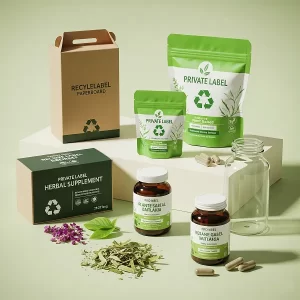
Sustainable, recyclable, planet-friendly options
Sustainable, recyclable, and planet-friendly packaging options represent the future of responsible supplement manufacturing, featuring biodegradable materials derived from renewable resources like plant-based polymers, recycled content, and compostable films that significantly reduce environmental impact while maintaining superior product protection and shelf stability. These eco-conscious solutions include glass containers that offer infinite recyclability without quality degradation, post-consumer recycled plastics that minimize virgin material consumption, and innovative bio-based materials such as mushroom packaging, seaweed films, and paper-based alternatives that decompose naturally without leaving harmful residues. The sustainable packaging approach extends beyond materials to include minimalist design principles that reduce overall packaging volume, concentrated formulations that decrease transportation footprints, and refillable container systems that promote circular economy principles, while advanced barrier technologies ensure product efficacy is never compromised. Modern consumers increasingly prioritize environmental responsibility in their purchasing decisions, making sustainable packaging a powerful differentiator that enhances brand reputation, meets regulatory requirements, attracts eco-conscious demographics, and demonstrates corporate social responsibility while contributing to global sustainability goals and reducing the supplement industry’s overall environmental footprint.
Closure and Sealing Systems
This refers to the caps, lids, and seals used to close a product container. For food supplements, the right closure and sealing system is vital for ensuring product freshness, moisture protection, tamper evidence, and child safety. Common types include screw caps, flip-tops, and press-on caps, often combined with induction seals, pressure-sensitive liners, or foil seals. The choice depends on product characteristics, consumer convenience, and regulatory requirements.
Sustainable Packaging Options
This encompasses environmentally friendly packaging materials and designs. As consumer environmental awareness grows, sustainable packaging is becoming increasingly important. In the food supplement sector, this means using recycled materials (like R-PET plastic, glass), biodegradable materials, compostable materials, or adopting designs that reduce material usage (lightweighting) and allow for reusability. This helps decrease the carbon footprint and enhances brand image.
Packaging for E-commerce and Direct-to-Consumer
This type of packaging is specifically designed for products sold online and shipped directly to consumers. It needs to be more durable to withstand the rigors of transit, preventing product damage from drops and impacts. Considerations also include logistical efficiency (optimized size and weight), the unboxing experience (providing a pleasant and easy-to-open experience), and compliance with specific e-commerce platform packaging requirements.
Custom Packaging Development
This involves designing and manufacturing unique packaging from scratch to meet a brand’s and product’s specific needs. It includes creating one-of-a-kind shapes, sizes, material choices, and integrated branding elements. Custom packaging helps a product stand out in a competitive market, reinforces brand identity, and can offer a superior user experience or enhanced product protection.
Label Design and Application
This covers all the visual and textual information on a package, as well as the process of attaching it to the container. For food supplements, label design must clearly communicate brand messaging, product ingredients, usage instructions, health claims, and warning information. Label application requires precision and durability, adhering to all regulatory requirements such such as font size, mandatory statements, and “Supplement Facts” panels.
Quality Standards and Certifications
These are systems that ensure packaging materials and manufacturing processes comply with specific industry norms and safety standards. For food supplement packaging, important standards include food-grade material certifications (ensuring materials won’t contaminate the product), ISO certifications (quality management systems), GMP (Good Manufacturing Practices) compliance, and certifications related to sustainability or specific material origins. These certifications are foundational for product safety and brand credibility.
Getting Started with Your Packaging Project
This refers to the steps and considerations for launching a new product packaging project or redesigning existing packaging. It typically involves defining product needs (e.g., product form, shelf-life requirements), setting a budget, selecting packaging materials and types, communicating design concepts, prototyping and testing, choosing suppliers, and finally, production and quality control. Clear planning is key to project success.

